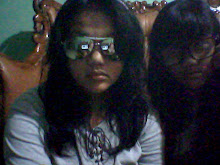Home
»Unlabelled
» Download Visual C# for Kids A Step by Step Computer Programming Tutorial Philip Conrod Lou Tylee Books
By
Sisca R. Bakara on Monday, May 6, 2019
Download Visual C# for Kids A Step by Step Computer Programming Tutorial Philip Conrod Lou Tylee Books
![]()

Product details - Paperback 494 pages
- Publisher Kidware Software; 15th ed. edition (July 28, 2017)
- Language English
- ISBN-10 1937161706
|

Visual C# for Kids A Step by Step Computer Programming Tutorial Philip Conrod Lou Tylee Books Reviews
- What is “Visual C# For Kids†... and how it works.
These lessons in Visual C# For Kids are a highly organized and well-indexed set of tutorials in the Visual C# programming environment meant for children aged 10 and above. Visual C# is a programming environment which allows the user to drag and drop buttons, text boxes, scroll bars, timers and dozens of other visual "controls" to make programs which look like "Windows" programs. The controls are combined to provide the user with a GUI – a graphical user interface.
The tutorials provide the benefit of completed age-appropriate applications for children - fully documented projects from the teacher's or parents’ point of view. That is, while full solutions are provided for the adults’ (and child learner's) benefit, the projects are presented in an easy-to-follow set of lessons explaining the rational for the form layout, coding design and conventions, and specific code related to the problem. The child-learner may follow the tutorials at their own pace. Every bit of the lesson is remembered as it contributes to the final solution to a kid-friendly application. The finished product is the reward, but the student is fully engaged and enriched by the process. This kind of learning is often the focus of teacher training. Every computer science teacher knows what a great deal of work required for projects to work in this manner, and with these tutorials, the work is done by an author who understands the classroom and parenting experience. That is extremely rare!
Graduated Lessons for Every Project … Lessons, examples, problems and projects. Graduated learning. Increasing and appropriate difficulty... Great results.
With these projects, there are lessons providing a comprehensive, kid-friendly background on the programming topics to be covered. Once understood, concepts are easily applicable to a variety of applications. Then, specific examples are drawn out so that a young learner can practice with the Visual C# form designer. Then specific coding for the example is provided so that the user can see all the parts of the project come together for the finished product.
By presenting lessons in this graduated manner, students are fully engaged and appropriately challenged to become independent thinkers who can come up with their own project ideas and design their own forms and do their own coding. Once the process is learned, then student engagement is unlimited! I have seen literacy improve dramatically when students cannot get enough of what is being presented.
Indeed, lessons encourage accelerated learning - in the sense that they provide an enriched environment to learn computer science, but they also encourage accelerating learning because students cannot put the lessons away once they start! Computer science provides this unique opportunity to challenge students, and it is a great testament to the authors that they are successful in achieving such levels of engagement with consistency.
My History with Kidware Software products.
I have used Kidware’s Programming Tutorials for over a decade to keep up my own learning. By using these lessons, I am able to spend time on things which will pay off in the classroom. I do not waste valuable time ensconced in language reference libraries for programming environments – help screens which can never be fully remembered! These projects are examples of how student projects should be as final products - thus, the pathway to learning is clear and immediate in every project.
If I want to have students use or expand upon projects, then I take advantage of site-license options. I have found it very straight forward to emphasize the fundamental computer science topics that form the basis of these projects when using them in the classroom. I can list some computer science topics which everyone will recognize, regardless of where they teach – topics which are covered expertly by these tutorials
• Data Types and Ranges
• Scope of Variables
• Naming Conventions
• Decision Making
• Looping
• Language Functions – String, Date, Numerical
• Arrays, Control Arrays
• Writing Your own Methods (subroutines) and more… it’s all integrated into the tutorials.
In many States or Provinces, the above-listed topics would not be formally introduced in Middle School computer studies, but would form the basis of most projects undertaken by students. With these tutorials, you as the teacher or parent may choose where to put the emphasis, to be sure to cover the curricular expectations of your curriculum documents.
Any further Middle school computer programming topics derive directly from those listed above. Nothing is forgotten. All can be integrated with the lessons provided.
Quick learning curve for teachers! How teachers can use the product
Having projects completed ahead of time can allow the teacher to present the design aspect of the project FIRST, and then have students do all of their learning in the context of what is required in the finished product. This is a much faster learning curve than if students designed all of their own projects from scratch. Lessons concentrating on a unified outcome for all makes for much more streamlined engagement for students (and that is what they need, in Middle school, and in grades 9 and 10), as they complete more projects within a short period of time and there is a context for everything that is learned.
After the process of form-design, naming controls and coding has been mastered for a given set of Visual C# controls, then it is much more likely that students can create their own problems and solutions from scratch. Students are ready to create their own summative projects for your computer science course – or just for fun, and they may think of projects for their other courses as well! And what could be wrong with asking the students’ other teachers what they would like to see as project extensions?
Meets State and Provincial Curriculum Expectations and More
Different states and provinces have their own curriculum requirements for computer science. With the Kidware Software products, you have at your disposal a series of projects which will allow you to pick and choose from among those which best suit your curriculum needs. Students focus upon design stages and sound problem-solving techniques from a computer-science, problem-solving perspective. In doing so, they become independent problem-solvers, and will exceed the curricular requirements of Middle schools everywhere.
Useable projects - Out of the box!
The specific projects covered in the Visual C# for Kids tutorials are suitable for students aged 10 and above. Specific kid-friendly tutorials and projects are found in the Contents document, and include
Bonus Projects
Project 1 - Stopwatch B-2
Project 2 - Tic-Tac-Toe B-8
Project 3 - Dice Rolling B-20
Project 4 - State Capitals B-26
Project 5 - Memory Game B-37
Bonus Project - Pong! B-53
As you can see, there is a high degree of care taken so that projects are age-appropriate.
You as a parent or teacher can begin teaching the projects on the first day. It's easy for the adult to have done their own learning by starting with the solution files. Then, they will see how all of the parts of the lesson fall into place. Even a novice could make use of the accompanying lessons.
How to teach students to use the materials.
In a Middle school situation, parents or teachers might be tempted to spend considerable amounts of time at the projector or computer screen going over the tutorial – but the best strategy is to present the finished product first! That way, provided that the adult has covered the basic concepts listed in the table of contents, then students will quickly grasp how to use the written lessons on their own. Lessons will be fun, and the pay-off for younger students is that there is always a finished product which is fun to use!
Highly organized reference materials for student self-study!
Materials already condense what is available from MSDN (which tends to be written for adults) and in a context and age-appropriate manner, so that younger students remember what they learn.
The time savings for parents, teachers and students is enormous as they need not sift through pages and pages of on-line help to find what they need.
How to mark the projects.
In a classroom environment, it is possible for teachers to mark student progress by asking questions during the various design and coding stages. In the early grades (grades 5 to 8) teachers can make their own oral, pictorial review or written pop quizzes easily from the reference material provided as a review strategy from day to day. I have found the requirement of completing projects (mastery) sufficient for gathering information about student progress - especially in the later grades (grades 10 to 12).
Lessons encourage your own programming extensions.
Once concepts are learned, it is difficult to NOT know what to do for your own projects. This is true even at the Middle school level – where applications can be made in as short as 10 minutes (a high-low guessing game, or a temperature conversion program, for example), or 1 period in length – if one wished to expand upon any of the projects using the “Other Things to Try†suggestions.
Having used Kidware Software tutorials for the past decade, I have to say that I could not have achieved the level of success which is now applied in the variety of many programming environments which are currently of considerable interest to kids! I thank Kidware Software and its authors for continuing to stand for what is right in the teaching methodologies which work with kids - even today's kids where competition for their attention is now so much an issue.
Regards,
Alan Payne, B.A.H. , B.Ed




